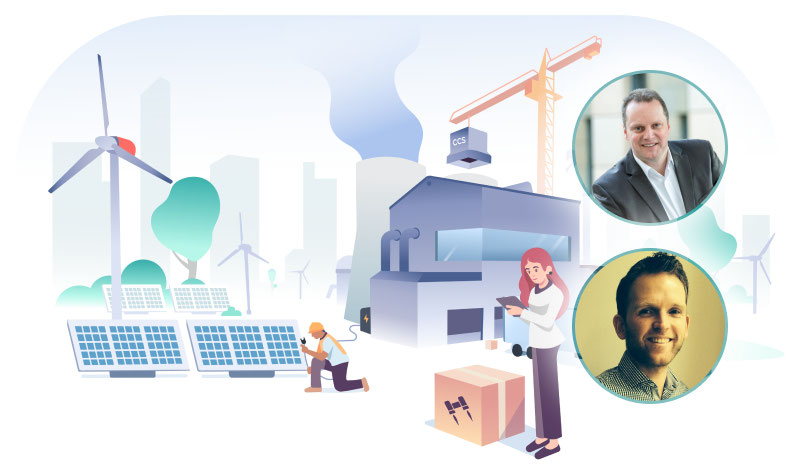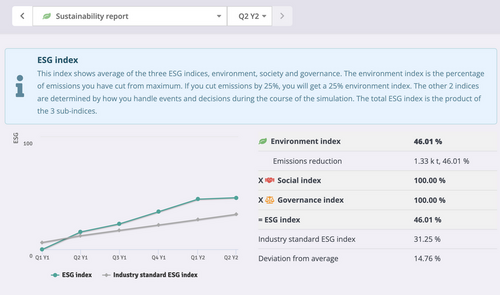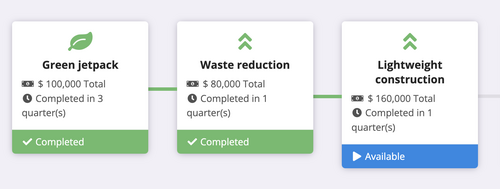
Why we need sustainability focused business simulations
Sustainability is becoming more ingrained in business education every year. Incorporating such an important real-world issue can be difficult, especially in an engaging way. We asked two educators who pushed for sustainability simulations, to share why the subject of sustainability is so important in finance education - and why the Hubro Sustainability simulations will be such a great addition to their classes.
The educators looking for sustainability simulations
Coen van Hout is an Academy Manager at HAN University in the Netherlands. Coen has used the Hubro Business simulation in his teaching previously so is no stranger to the benefits this can bring to students. He found that the added element of game based learning really helps students both engage in financial content and also see how it applies in practice.

Mike Schulze is Vice Dean of Finance, Accounting & Quantitative Methods at CBS International Business School. He also teaches as a professor of Controlling, Accounting and Financial Management. He makes sure business simulations are used not only as a supplementary tool in theory courses at the school, but also as capstones or at the start of programmes.

Simulations are already a huge part of their teaching
Clearly both Coen and Mike have experience in using business simulations. With the new Sustainable Business simulations adding core concepts of sustainability they are both able to see how this will really benefit their finance students.
My experiences using simulations in education have been very positive. By combining the game element to (finance) content and professional skills, students are more motivated and have a better understanding about the relationship between the content and practical use.
- Coen
Mike also had similar words to say why he and his colleagues at CBS use business simulations across many courses and levels.
Business simulations form the ideal environment in which the issues and dynamics of complex business situations can be explored. Business simulations enable our students to learn in an engaging, challenging, and dynamic environment, while applying concepts that they have been taught in their study curriculum in previous semesters.
- Mike
Mike also mentioned to us the problem of ‘siloing’ in business education. He found business simulations helped to bridge the gap between theory and practice and connect the dots for his students.
The complexity of running a business makes it necessary to cut it out in theoretical bits – e.g. accounting, HR, marketing, strategy, etc. – but theoretical education in this format may create a silo effect. Students sometimes are not able to understand intuitively how these different pieces relate to each other.
We believe that experiential learning in the form of a business simulation is by far the best way for students to understand how real-life businesses operate.
- Mike

The importance of sustainability in business education
Coen was one of the first educators to encourage Hubro to develop a business simulation focused on sustainability in business. Finance subjects are not the first to be thought of when talking about sustainability in business education. But as Coen explains brilliantly below, today’s students will be entering a very different business world.
The impact of climate change is rapidly becoming more visible and tangible worldwide. We are also seeing its effects more and more clearly in the economy as climate risks translate into financial losses.
This underscores the need for a transition to a clean, green, inclusive and circular economy. The financial sector is a crucial player in achieving this transition: capital from institutional and private investors is desperately needed to meet the goals of the Paris Climate Agreement.
In the near future this is not a choice of the company anymore, because of the legislation from the EU (ESG taxonomy). Companies must consider people, society and the environment in investment decisions, and encourage portfolio companies to improve their ESG performance. Specifically, ESG factors are about how a company deals with such issues as carbon emissions, water and resource use, human rights, diversity and inclusion, security and data privacy.
- Coen

Explore the Sustainability Business and Finance simulations 🌱
A sustainable finance simulation is what we need
These rapid and necessary changes mean that educators must commit to engaging their students in all business areas in holistic sustainability education. After having success using Hubro’s Business simulations already Coen was confident a Sustainability simulation would be a great way to provide this.
For his finance students, Coen uses a simple message:
The idea that sustainability would come at the expense of financial returns can be dismissed once and for all: scientific studies have now convincingly demonstrated that a return and a long-term focus go hand in hand in investments.
- Coen
Both Coen and Mike’s belief in business simulations means that new simulations covering pertinent business concepts such as sustainability can only be a great addition to their teaching.
Sustainable finance is a serious, contemporary and pertinent topic in the field of finance, which is why we have integrated a course on this topic into the curriculum of our master's program in global finance.
We want to further strengthen the learning experience of the students in this course by integrating an additional business simulation. This enables students to interactively experience the challenges of balancing different stakeholder expectations in the ESG domain of businesses as well as to better understand the role of finance in this specific context.
- Mike
Hubro’s Sustainable Business simulations
At Hubro Education we already had a solid blueprint for a Sustainability simulation in our Business and Finance simulations. But we didn’t want to just paint with a green brush and say we have a sustainable business simulation!
At the core of our new sustainability simulations is an ESG index. Students must improve their ESG score through many different decisions and actions across their virtual business. They must balance financial sustainability with environmental and social responsibility. Their success in the sustainability simulations is dependent on this. Short-sighted focus on profit won’t cut it, and neither will blindly making “green” investments.
Coen and Mike were keen to put across why they’re glad it’s Hubro that’s developed Sustainable Business simulations for education.
Unlike other simulations, Hubro Education's simulations take students more "by the hand". Tutorials guide participants step-by-step through the individual relevant segments of decision-making. Imaginary advisors point out any missing decisions before a period is completed by the participants.
Participants are introduced to the simulation in the best possible way and further in the course can focus on the core element of the simulation, the decisions to be made. This enables a high level of learning success.
- Mike
Coen feels the sustainability simulation lets him really see the level of his students' understanding. By using the customization features in the simulation platform he can provide focused assessments for his classes.
The simulation can be used in various didactic concepts. For example in a pressure cooker setting, as well concentrically (running over a period of several weeks).
It is possible to analyze the realized results of a team in the simulation so that you can encourage the teams to improve on specific elements. In addition, it is possible to implement standard MCQ tasks in the game as well as open / analysis questions.
- Coen
Give your students an engaging learning experience
The Hubro Sustainable Business simulations can be implemented in many different ways to make sure your students get hands-on experience with sustainability in business. You can read more about the sustainability simulations here.

Book a free trial meeting to see how it works
Get a free trialExplore more of our blog for business education, educational business simulations and remote teaching methods.
Back to the blog
